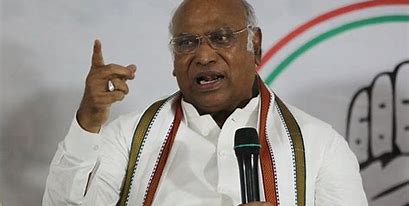During the Covid-19 pandemic, when face-to-face interaction and physical classrooms became out of reach, government school teacher Ritika Tomar from Sonbhadra, Uttar Pradesh, came up with a solution in the form of using ICT (Information and Communication Technology) tools for teaching and learning. The syllabus, teacher, as well as the learner remained the same. The only thing that got changed in her approach was the method of teaching and learning. She divided her students in a group of two — those who had access to smartphones and those who had simple cell phones. She made a WhatsApp group and started sending messages, YouTube links, videos regarding the content of learning materials. She also established a successful connection with those who did not have access to smartphones through simple text messages and made them aware of various channels like Doordarshan, radio programme, where students could learn according to their syllabus with a fixed time table. She is now trying that no student lags behind and makes the best use of ‘DIKSHA’, ‘E-Pathsala’, ‘Let’s learn English’ like platforms to reach the goal. Though she was not able to connect and be in contact with all her learners, she is the best example of practising ICT tools theory in a practical way in remote areas.
As per a UN report, school closures have impacted around 247 million children enrolled in elementary and secondary education in India. This pandemic has also impacted about 28 million children who were attending preschool education in ‘Anganwadi’ centres. In this scenario, many students did not expect to return to the institution which they left due to the closures. Many students may enrol in an institution closer to home, but others will be unable to return to their studies.
Digital divide is a reality
We can’t ignore the fact that students from remote areas, who are facing lots of difficulties during this pandemic, are not in a position to get benefitted from online learning-teaching methods. We also need to understand that this is not the first time that learning of children got hampered. It has been going on since ages. The states like Bihar, Assam face floods every year. In the regions of Kashmir and Northeast, there are several incidents of violence and similarly there are states where due to excessive heat, cold or rainfall, schools remain closed for months. Rural and tribal areas are facing three kinds of problems. The first is the availability of digital devices. Not every child has access to PCs, laptops or smartphones. Even if a family has one smartphone; it is not for the purpose of learning. The second is the network issue and the third is the data issue. Data is cheap in India but still not everyone can afford it.
ICT is a blessing in disguise
Although technology will never replace the existence of a physical classroom, there is still a need to develop a more child-centric education model mixed with textbook and technology. New generation is tech-friendly and modern devices attract them the most. Now, instead of scolding them to not engage with it all the time, we need to take it as a challenge to use digital devices as an educational tool, and making it as a platform to learn something new, to sow in them seeds of creativity. To make it possible, the teacher needs to come forward. If we see from teachers’ perspective, ICT tools are empowering them and helping them even in this time of epidemic to connect with fellow teachers virtually and to continue their teaching to reduce the loss of education to children and improve the things further. Usage of ICT tools gives access to students to do any course, at any time by connecting themselves with the best of faculty. It is cost-friendly and hence, irrespective of their financial condition, they can access a lot of contents and materials. It fills the broad gap between those who have access to a variety of contents in different languages and those who do not. Hence fulfilling the purpose of reaching the hearts of students instead of mind.
ICT tools have the power to make teachers reach an unlimited number of students which is not possible in a physical classroom, especially in a rural context, where dropout rates are higher and students do not attend school on a regular basis due to a restricted time table as they serve as a working hand for their parents. Using ICT tools are also environment friendly as it saves paper and hence ends up saving millions of trees. It also saves teachers’ time as they can solve a large number of pupils’ problems, doubts in a go and also in assessment process as their papers, assignment, projects can be checked quickly and feedback can be given immediately.
Needed, customised ICT solutions
The pedagogy of teaching and learning also demands a change moving from a teacher centric approach to a child-centred one, making learning enjoyable and engaging for them. There are various examples of people who are coping with the current scenario and coming out with new innovative measures. Government school teacher Vijay Sharma has adopted a very innovative teaching technique during lockdown. While following physical distancing, he started taking class with the help of loudspeakers in his village Konkhana in the district of Mahasamund, Chhattisgarh. As a result, children are now able to connect themselves and are studying by sitting at their home. His school Komkhana Government School was converted into a quarantine center. He found out that most of the pupils did not have access to smartphones, thus with the help of village people and panchayat, he came up with this idea.
Today, other districts are also following his model. Recently, a school in Bankathi village, Dumka, Jharkhand has found a similar way to teach their 200-odd students amid the crisis. The headmaster Shyam Kishore Singh of Upgraded Middle School has set up several loudspeakers on trees and walls across the village. Students can attend the classes from different locations near the loudspeakers for 2 hours daily. AppGuru and government school teacher from Alwar, Rajasthan, Imran Khan believes that this is the time to turn adversity into an opportunity and to really work as a teacher in this direction to reach everyone through technology. Imran has developed more than 80 educational apps for students and was praised by PM Narendra Modi during his UK rally. Today crores of students are using the apps made by him not only in India but also abroad.
The road ahead
India must focus on enhancing network connectivity so that students and teachers of rural areas can get benefitted. The Indian telecom sector needs to add additional mobile towers and implement the Right of Way (RoW) policy announced in 2016 immediately to provide quality services. BharatNet project must be completed on high priority before 2022 so that highly scalable network infrastructure can be accessible on a nondiscriminatory basis. This project will help to provide affordable broadband connectivity for all households and on-demand capacity to all institutions, to realize the vision of Digital India. We also need to think of other measures such as inventing a learning centric student friendly tablet on subsidized rates, and need to make it accessible to at least one tablet per household. The Ministry of Telecom, specially TRAI should come forward and work on providing students friendly data packs. India also needs to focus on developing ICT friendly Content, which can be easily available on phone and accessible without internet connection.
Currently, we have more content with engagement and entertainment purposes, and private players are converting this situation into a profit-making business model. They are not giving importance on child psychology, teaching pedagogy while creating contents. We should focus on capacity building of teachers so that India can leverage their skills for content creation. There is a need to launch dedicated programmes on radio and television and here we can learn some global practices like ‘Somali-language television series’, ‘Sesame Sheeko Sheeko’ and ‘Baghch-e-Simsim of Afghanistan’. We also need to involve Panchayati Raj Institutions at grassroots level so that society can own such initiatives. Making our government schools as ICT resourceful schools should be in priority. Right now, many state governments and even the central government are working on this direction but the government. institutions are more dependent on private players, rather than enhancing their own capacity.
As the Government of India is planning to convert school blackboard into digital board by 2022, we also need to focus on providing electricity to schools so that they can use it with full potential. This corona crisis has taught us that we need to focus on the learning of children in the long run and for that ICT tools can play a very important role. It is certain that ICT will impact education in multiple ways, only some of which can be foreseen at the present time. It’s good to see that our National Education Policy 2020 also talks about eliminating the digital divide and expanding ICT-based educational initiatives. We must be hopeful for the better future of India.
The author is the founder of SarkariSchool.in.







